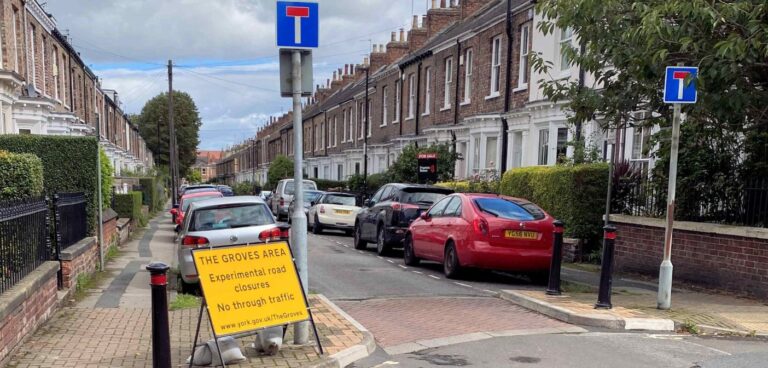City of York Council is to consider making permanent an 18-month experimental traffic regulation order which saw a number of road closures put in place in The Groves area.
Since September 2020 a number of road closure points and changes to traffic routes have been implemented in The Groves. The council said this followed feedback from residents regarding the impact of large volumes of through traffic in the neighbourhood.
The traffic changes were intended to be temporary, and to allow for adjustment where necessary to support the ambitions outlined in the Community Plan while limiting impact for locals.
The executive is set to consider results and evaluate the low-traffic neighbourhood trial, as well as looking at several consultation phases. Data in the report revealed that, whilst the scheme has seen traffic on surrounding routes impacted, The Groves area has seen air quality improvements. It also shows a reduction in traffic levels, increased levels of cycling and enhanced community activities in the neighbourhood.
In order to meet the transport and housing objectives outlined in the council plan, and to follow the national policy direction from the Department for Transport, the report recommends that the trial be made permanent.
This would also allow for further data to be collected, keeping traffic flows in the area under review with regard to long-term impacts and possible further mitigations.
Furthermore, a number of proposed improvement works will also be presented to the executive for consideration. These range from upgrades to junctions, cycling improvements, as well further surveys and monitoring of impacts on surrounding residential streets to consider further mitigations in the future.
Councillor Andy D’Agorne, deputy leader of City of York Council and executive member for Transport, said: “This low traffic neighbourhood trial follows similar schemes across the country, with the aim of reducing traffic flow and its associated concerns in a local area. It is generally accepted that to achieve this reduction, traffic flow has to be focussed on the main distributor roads.
“The scheme has demonstrated a significant reduction in motorised traffic in The Groves in general, increases in the number of cyclists travelling through the area and a general reduction in annual mean NO2 concentrations, within the wider context of improvements in York’s air quality in 2020.
“While such trials often impact on the traffic flow in surrounding streets, as is the case here, the significant improvements brought about by these restrictions have directly addressed the concerns expressed by the local residents and also given us valuable insight which will be used in the development of the future transport plans for the city.”





